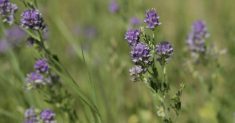crop report
Southwest Region
Little to no rainfall in the southwest region brought harvest to 95 per cent complete; only a few fields of late-seeded canola and cereal crops remain. Most canola that remains unharvested has high green seed counts due to the frost. Producers are waiting for a rain to help reduce green seed count.
The majority of the cereal crops left to harvest were sown late and impacted by frost. Several acres were harvested for silage over the past week with conditions ideal for putting up quality feed.
Read Also

Manitoba sclerotinia picture mixed for 2025
Variations in weather and crop development in this year’s Manitoba canola fields make blanket sclerotinia outlooks hard to pin down
Producers are working fields that were too wet to seed to prepare them for next spring. Several acres have been sprayed and worked. Little to no fall fertilizing has been done. Winter wheat and fall rye fields have good germination and stand establishment.
Pasture growth is minimal resulting in producers supplemental feeding.
Northwest Region
Dry conditions prevailed in the northwest region along with above-normal temperatures. Harvest is at the final stages through the Swan River and Roblin areas where only a few swathed fields and fall work remains.
East of the escarpment where excess moisture delayed seeding, approximately 10 per cent of seeded acres remain to be harvested. Lower quality and yields of late-seeded canola is reported; downgrading is related to frost and green seed. Some greenfeed fields have been harvested for grain; quality is lower due to light test weights from frost damage. In addition to some remaining canola acres, majority of the hemp, flax, and soybean acres remain to be harvested.
Silaging of corn and lateseeded greenfeed is ongoing. Continuing good weather has encouraged more straw to be baled. Post-harvest field work and weed control continues. Soil moisture conditions are rated as dry to good. Dry soils and warmer temperatures have delayed fertilizer applications. Growth on pastures is minimal and conditions are dry.
Central Region
Favourable weather conditions prevailed during the week with above-normal temperatures and no rainfall allowing for good harvest progress. Cereal grains harvest is complete. Some of the late-planted canola fields that were cut near the mid-September frost are being harvested with higher green seed count and smaller seed.
Most of the canola crop was harvested with no major issues with green seed content. Flax harvest is ongoing with lateseeded fields being desiccated to aid in dry-down. Soybean harvest is 60 to 70 per cent complete.
Yields vary from 10 to 40 bushels per acre with an average of 30 bushels per acre. Earlier-planted fields are tending to be higher yielding. Quality is good with some reports of smaller seed due to the dry conditions during crop maturation. Edible beans harvest is 90 per cent complete with reported yields varying from 1,100 to 2,000 lbs. per acre.
Grain corn harvest has begun with early yield reports of 100 to 120 bushels per acre.
Sunflower harvest has yet to start as the plants are still green and need to dry down. Field work has progressed with the help of the rainfall received a couple of weeks ago permitting easier and more effective tillage. Some areas in the northeast around Ste-Agathe and Niverville received only smaller amounts of precipitation and would benefit from more rain. Soil testing is ongoing and some anhydrous application has started.
More fertilization is expected to take place once temperatures cool. Winter wheat and fall rye emergence was uneven but has improved since the rainfall received mid-September. Hay and pasture growth is minimal. More cattle herds are being moved to home yards for winter feeding. Late-planted greenfeed crops are being cut and baled. Cereal straw baling is done and supplies are being moved to home yards in preparation for the winter feeding period.
Eastern Region
Harvesting continues to advance at a rapid pace in the eastern region. Some very light showers occurred in some districts early in the week but resulted in only brief delays in harvest. Soil moisture levels across the region are rated as dry. Soybean harvest ranges from 75 to 90 per cent complete with yields ranging from 15 to 40 bushels per acre.
Many producers report overall average yields in the 25-to 30-bushels-per-acre range. Quality is average. Chemical desiccation of sunflowers was completed early last week. With crop dry-down proceeding rapidly, widespread harvesting is expected very soon if the weather remains favourable. In some districts of the region, 10 to 25 per cent of grain corn acres are harvested with yields ranging from 75 to 125 bushels per acre. Standing corn crop is drying down rapidly.
The earliest-seeded winter wheat stands are in the three-leaf stage. Overall winter wheat stand establishment appears satisfactory. Field work and drainage work kept up with
Photo: jeannette greaves
the pace of harvest. Anhydrous applications are being delayed until cooler temperatures and increased soil moisture levels occur.
Hayfield conditions range from poor to good while pasture land conditions range from poor to fair. Second cut is still winding down. More producers are starting to feed cattle on pasture and some corn grazing has begun.
Interlake Region
Weather permitting, majority of cereal, canola, flax and soybean harvest should be complete within the next week. Some late-seeded canola and soybean fields are having issues with green seed counts. Harvesting of grain corn and sunflowers hasn t started.
Some greenfeed fields have been harvested for seed with the anticipation of average yields. Field work is ongoing with many acres still left to be completed. Corn silage yields in the southern part of the Interlake are average to below average while in the Arborg area yields are average to above average.
Greenfeed harvest is slowly wrapping up. Producers are concerned with nitrate levels in silage due to the frost events. Pasture production is minimal with many producers having to begin feeding earlier than in past years.


















